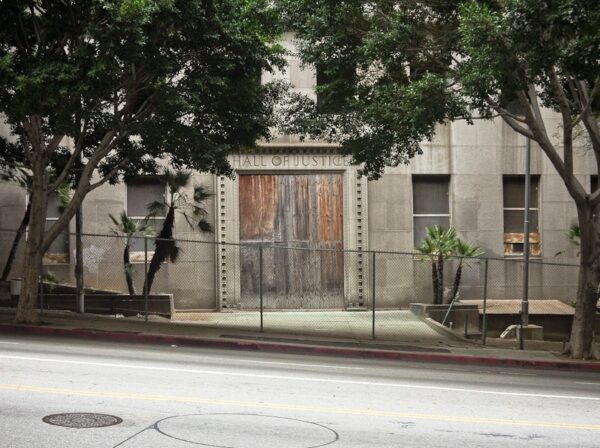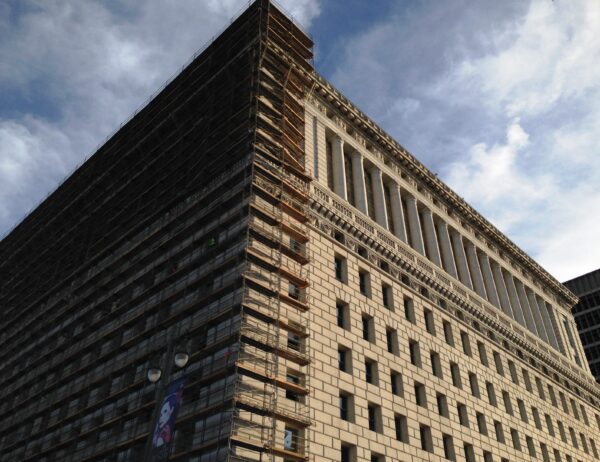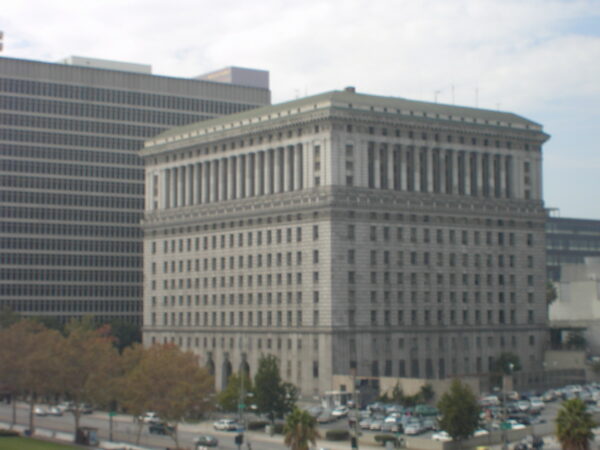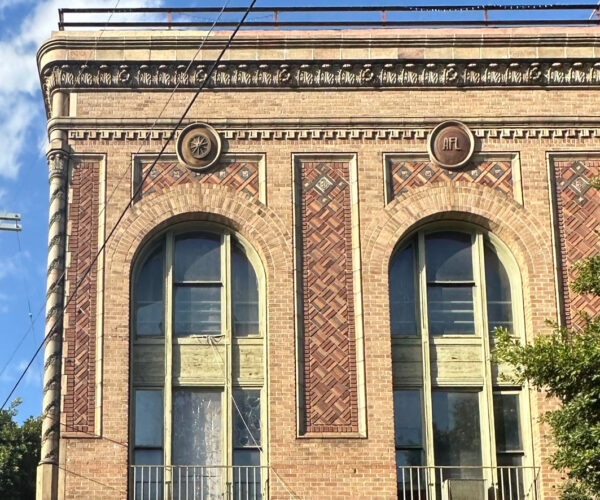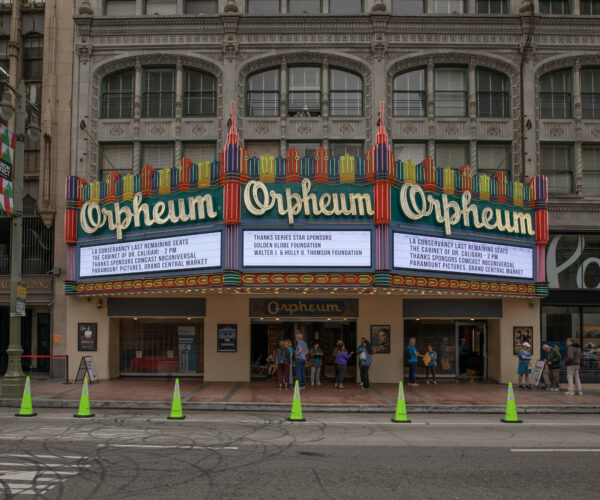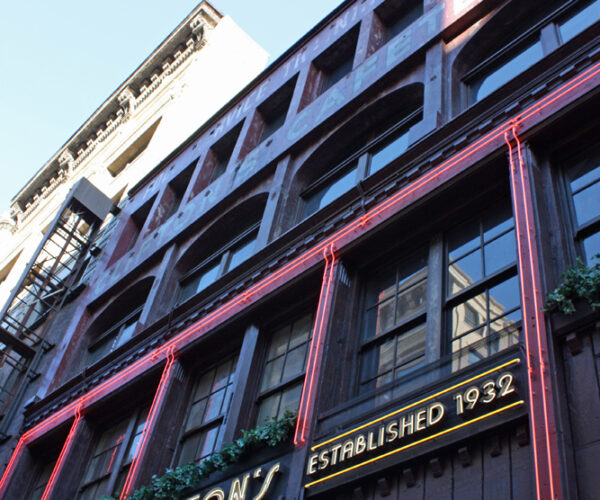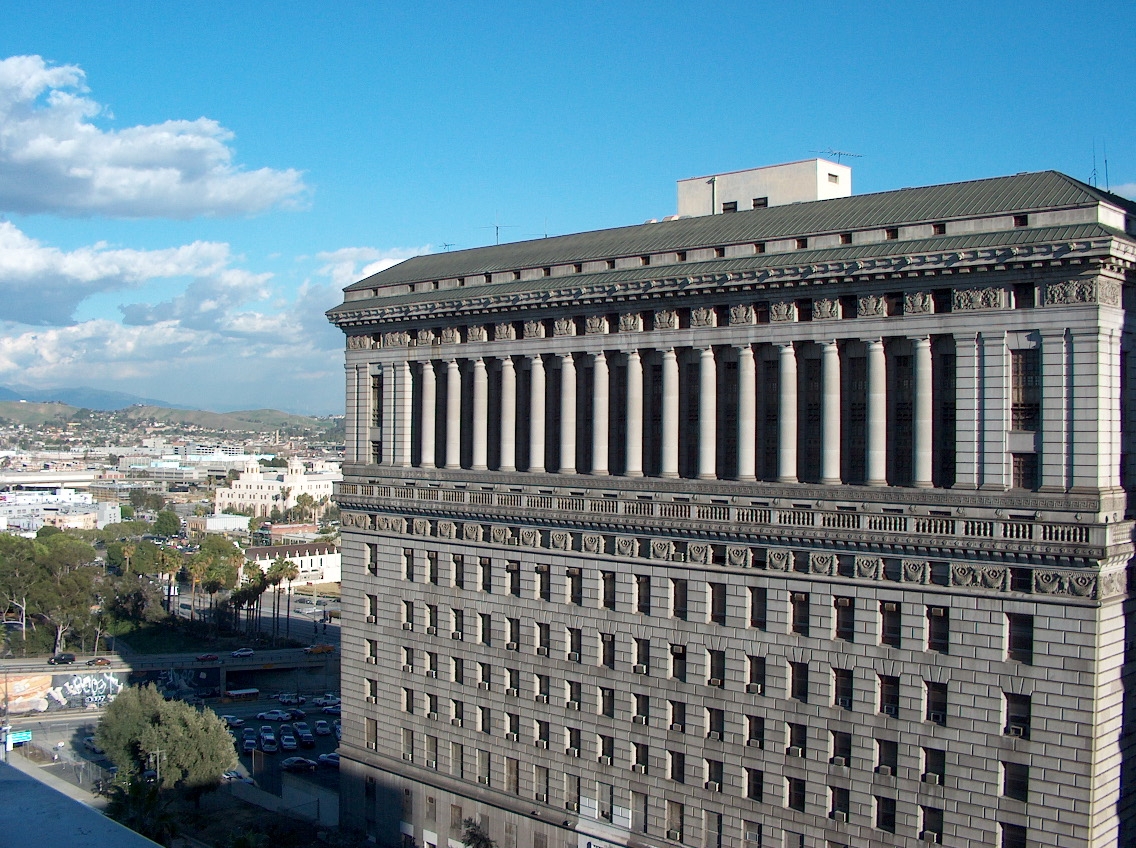
Place
Hall of Justice
The oldest surviving government building in the Los Angeles Civic Center is an imposing presence with classical detailing and matching facades on all four sides.
Saved
The Hall of Justice reopened with a re-dedication ceremony on October 8, 2014, capping a lengthy, $234 million rehabilitation that restored the building back to County service.


Place Details
Address
Architect
Neighborhood
Year
Style
Decade
Designation
Property Type
Government Officials
Community

Photo by Joe Decruyenaere on Flickr
Overview
The Hall of Justice is the oldest surviving government building in the Los Angeles Civic Center, that collection of city, county and federal buildings stretching for several blocks along Temple and First Streets in downtown Los Angeles. The Los Angeles County Board of Supervisors authorized construction of the building to consolidate the County’s courts and jail facilities in one location. The result was a grandiose new facility housing all levels of the county criminal justice system. The Hall of Justice played a significant role in the criminal justice history of Los Angeles, housing such notable arrestees as “Bugsy” Siegel, Robert Mitchum, Charles Manson, and Sirhan Sirhan. The autopsies of Marilyn Monroe and Robert Kennedy were also conducted there.
About This Place
About This Place
With its bold classical detailing and matching facades on all four sides, the Hall of Justice is an imposing presence in the Civic Center and one of Los Angeles’ most striking Beaux Arts structures. The exterior is clad almost entirely in granite from ground level all the way up to the granite columns encircling the upper floors; a rarity for buildings of its size, where more economical terra cotta was typically used to achieve the appearance of dressed stonework. The floors above and below the colonnade contain terra cotta panels featuring bucrania (ox skulls) and acanthus leaves while a terra cotta cornice caps the façades. The opulent grand lobby features Ionic marble columns and a gilded, coffered ceiling.
The Hall of Justice was designed by the Allied Architects Association, a consortium of Los Angeles-based architects founded in 1921 for the purpose of exclusively designing buildings paid for by the proceeds of public tax money. Among the participating architects were Octavius Morgan, Reginald Johnson, Edwin Bergstrom, David C. Allison, Myron Hunt, Elmer Grey, Sumner Hunt, and Sumner Spaulding.
Our Position
The Hall of Justice sustained significant damage from the 1994 Northridge earthquake. Following the earthquake, the Conservancy participated in discussions with the County and the Federal Emergency Management Agency (FEMA) to ensure that important elements and features of the Hall of Justice would be retained as part of its future rehabilitation.
The building sat vacant for more than a decade before non-structural hazardous materials and debris were removed and a seismic retrofit design was completed. The Los Angeles County Board of Supervisors voted in November 2010 to rehabilitate the venerable landmark.
The Hall of Justice reopened with a re-dedication ceremony on October 8, 2014, capping a lengthy, $234 million rehabilitation that restored the building back to County service. The venerable granite landmark, which is the oldest government building in the Los Angeles Civic Center, was shuttered and vacant for 20 years following severe damage sustained in the 1994 Northridge earthquake.
The building’s rehabilitation included extensive cleaning of the Sierra White granite facades and the restoration of the marble-clad grand lobby and loggia. Historic staircases have been restored, and the original elevator cabs were refurbished and installed in the new elevators. While much of the historic fabric on the upper floors had been lost to alterations over the years, an intact courtroom and law library have been restored to their original condition. The jail cells, which were located on the upper floors, were removed to accommodate functioning office space. However, the cell block that once held Charles Manson was retained and relocated to the lower level.
